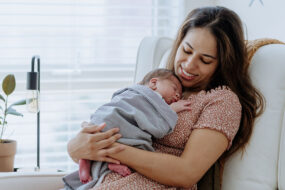How to help kids transition back to school after home learning
After weeks of school closures, kids are gradually returning to their classrooms. But parents should expect some rough patches along the way, warn experts.
Aussie kids have been studying from kitchen tables or home desks for weeks, with class and teacher contact limited to online platforms and video calls.
And now, after weeks of being closed to most students in a bid to stem the tide of coronavirus, schools across Australia are slowly reopening for face-to-face learning.
But Raising Children Network executive director Professor Julie Green says parents should be prepared to hit a few road bumps as children and teenagers get back into the school routine.
“There are likely to be some challenges as everyone adjusts,” Prof Green says.
“Parents might find their children face pre-existing issues when they return to school, such as conflict within friendship groups, a return to being busy with extracurricular activities and general fatigue at the end of the school week.”
- New normal: How to ease back into a post-iso life
So how can parents help their kids ease back into classroom life?
1. Re-establish school-day routines before class goes back
“It is going to take some time for children to adjust from home schooling to getting to school on time with lunches and with their bags packed,” says Prof Green.
“Younger children may need to have a reminder of how to organise their school uniform, lunchbox and bag.
2. Get back into good sleeping habits
If children have slept in a little later in the morning while remote learning, gone to bed later and not bothered to get out of their PJs for class, it is going to take some effort to break those habits.
The National Sleep Foundation recommends gradually adjusting bedtime and wake-up schedules about 10 days to two weeks before school starts – just as if children were returning to school after a holiday.
This helps reset their body clock. Keeping regular bedtimes on weekends is also important to regulate sleep patterns.
3. Talk to them about what to expect
After being physically isolated from friends for weeks, children of all ages can ease themselves into the mindset of being back in the classroom with their peers by discussing what they are looking forward to, and what they think may be a challenge, says Prof Green.
“Parents can also help younger kids to adjust to not being at home all day by talking to them about what going back to school will look like,” she says.
4. Don’t rush back to ‘busyness’
Just being back in the classroom will likely take an emotional, mental and physical toll for a few weeks.
“It may be an idea to introduce after-school activities again once children are settled at school,” says Prof Green.
Some extracurricular activities may be off-limits for a while longer anyway, while social distancing restrictions remain in place – so take advantage of that to help ease them back into post-iso life.
- Fighting fit: How to keep your child healthy at school
Written by Sarah Marinos.






